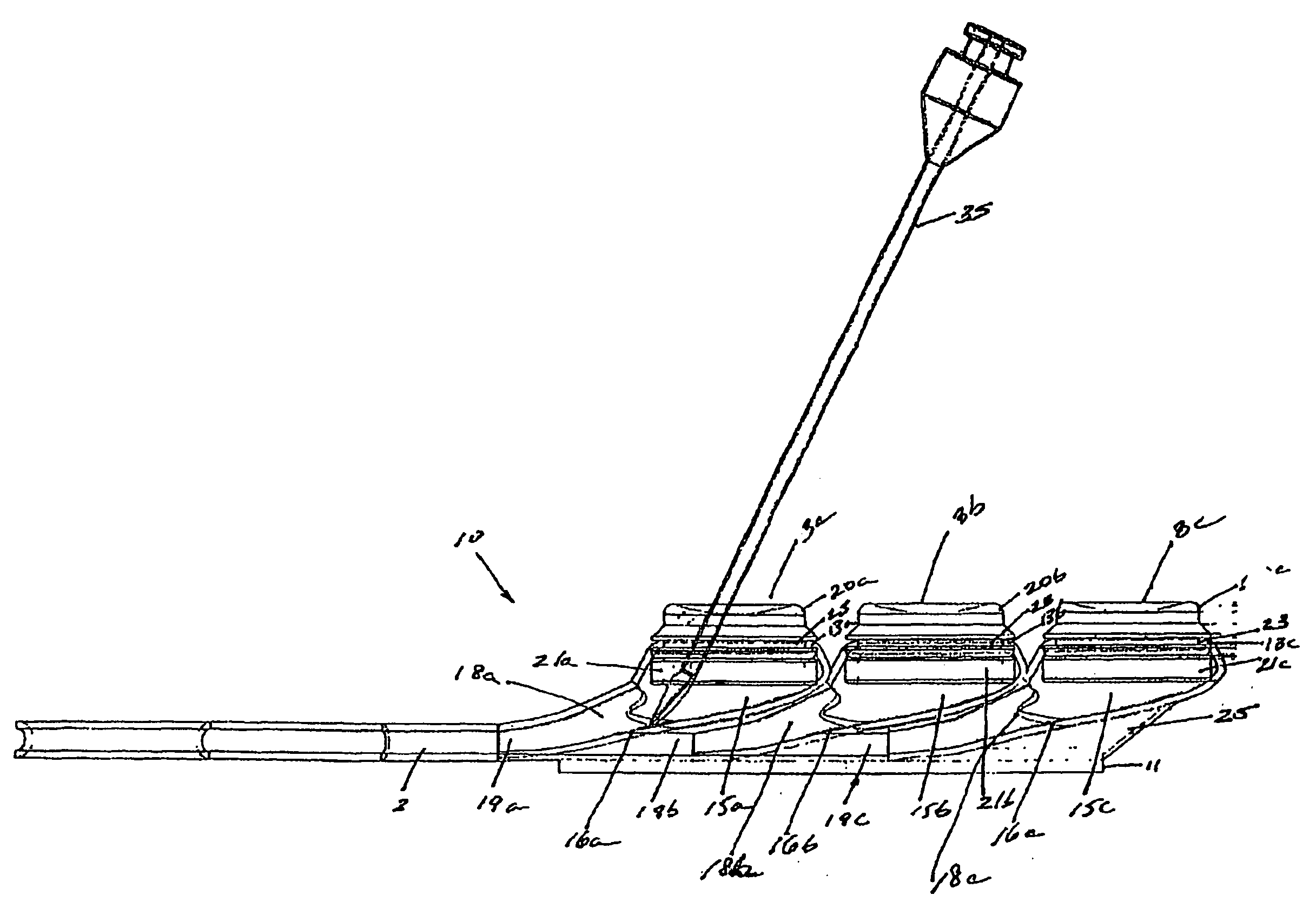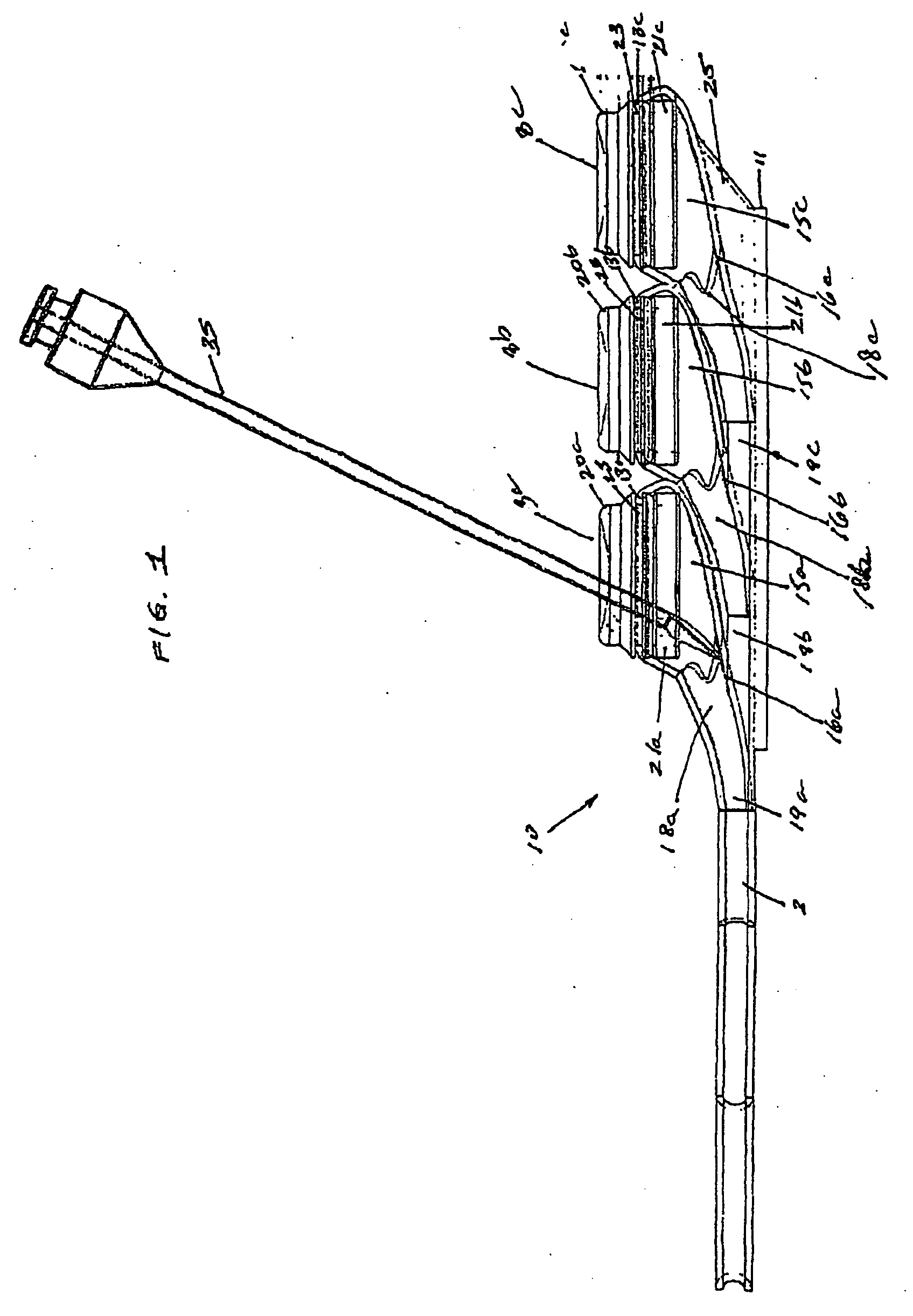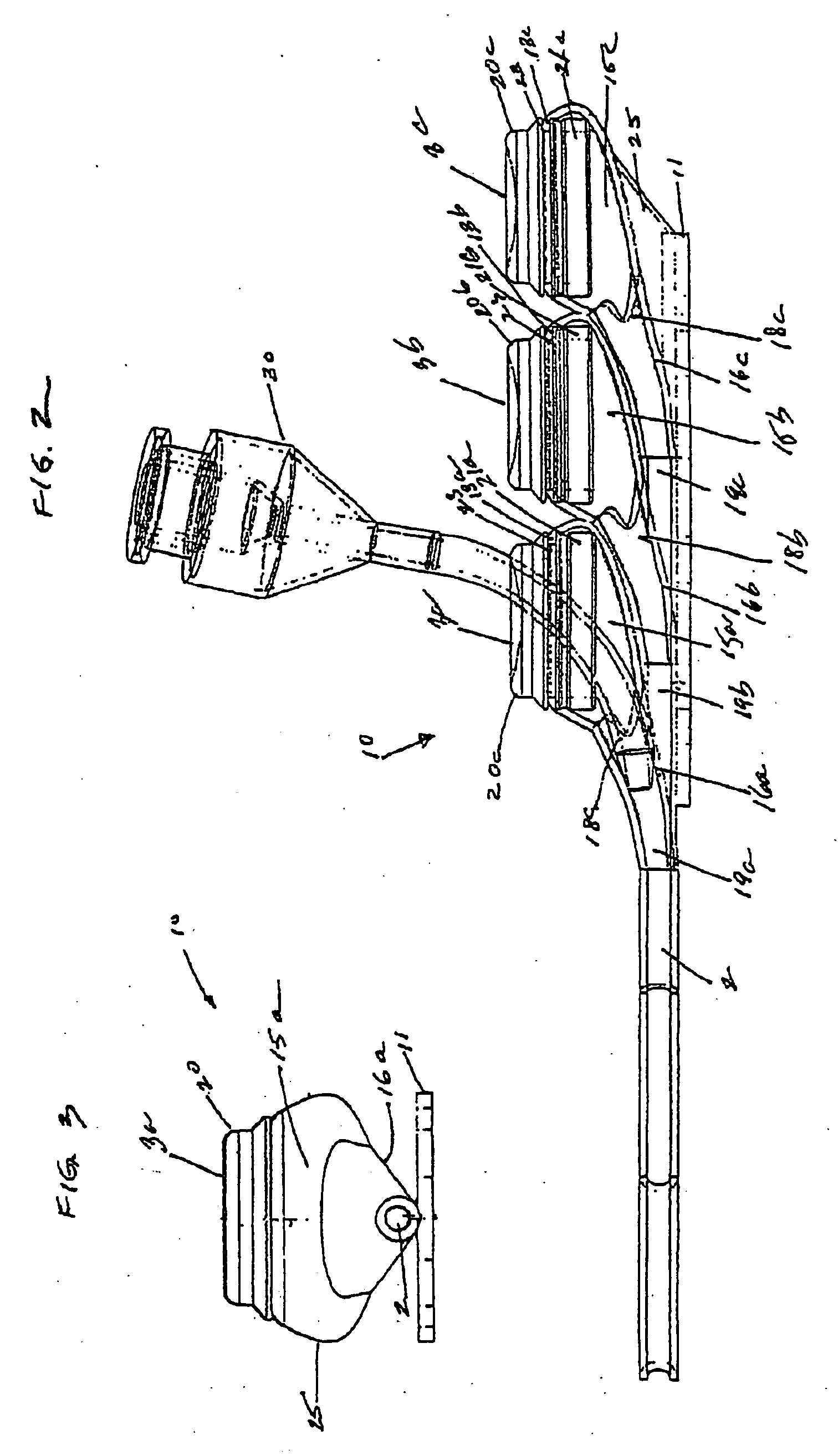Implantable hemodialysis access device
a biocompatible, access device technology, applied in the direction of medical devices, other medical devices, etc., can solve the problems of inconvenient hemodialysis and other extracorporeal procedures, the life of the patient, and the inability of the needle to penetrate the port deeply, so as to prolong the life of the device and reduce the trauma to the tissues
- Summary
- Abstract
- Description
- Claims
- Application Information
AI Technical Summary
Benefits of technology
Problems solved by technology
Method used
Image
Examples
Embodiment Construction
[0029]FIGS. 1-5, depict various views of the exemplary low-profile multiple port implantable access device 10 of the present invention. The access device 10 generally comprises a housing member 25 including circular openings 5a, 5b and 5c on the upper side of the housing and base 11 on the bottom on the housing. The housing 25 is constructed from a biocompatible non-metallic material, such as plastic, and is moderately flexible as to allow for improved anatomical placement over curved or irregular sections of the fascia musculature. Flexibility, in this sense, is not easily definable since many factors, such as patient anatomical profile data, patient comfort, doctor preference, etc., will go in to determining how flexible the housing 25 should be. Thus, the present invention recognizes that the flexibility spectrum is rather large, and may be determined on a patient-by-patient basis, or may comprise flexibility standards based, on, for example, patient profile data, average patient...
PUM
 Login to View More
Login to View More Abstract
Description
Claims
Application Information
 Login to View More
Login to View More - R&D
- Intellectual Property
- Life Sciences
- Materials
- Tech Scout
- Unparalleled Data Quality
- Higher Quality Content
- 60% Fewer Hallucinations
Browse by: Latest US Patents, China's latest patents, Technical Efficacy Thesaurus, Application Domain, Technology Topic, Popular Technical Reports.
© 2025 PatSnap. All rights reserved.Legal|Privacy policy|Modern Slavery Act Transparency Statement|Sitemap|About US| Contact US: help@patsnap.com



